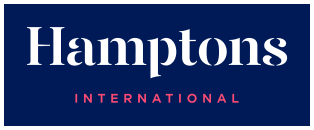Hout Bay property offers eco living
Category Area Focus
As part of the general drive towards sustainability, eco-living is one of the biggest property trends for 2019. Despite the rapid advances in technology, a return to nature is driving many property decisions. Rapid urbanisation, high density development, growing traffic delays and pressure on time, means that property buyers are increasingly looking to return to a more wholesome way of living, according to the Seeff Property Group.
The benefits of getting closer to nature are real. Living close to nature has been proven to promote general wellbeing and longer life. A Washington Post article quoted a study by the Journal of Environmental Health Perspectives which found that people who live in greener areas with more vegetation, have a lower risk of mortality.
The health benefits are attributed to factors such as improved mental health, social engagement and physical activity that come with living near green spaces. Surrounding yourself with nature means that your mental and physical health are all getting a boost.
While living in SA means that we are surrounded by an abundance of natural beauty, these are rarely part of urban living. Although eco-estates are increasingly providing the opportunity for this type of lifestyle, they are few and far between.
One of the best kept secrets of the Cape, must therefore be Hout Bay where you can still live close to nature. The natural environment is made up of the surrounding mountains and nature reserves, forests and fynbos enhanced by the clean sea air, says Lauren Zuidema, an agent with Seeff Hout Bay.
Hout Bay originated as a wood supplier for construction during the early settlement of the Cape and today, remains in demand for its stunning surroundings. There are a number of eco-friendly estates such as Tierboskloof and Kenrock. The valley area and suburb of Longkloof which lies on the Constantia side on the border of the Orangekloof Nature Reserve is another popular area for eco-living, says Ms Zuidema.
Here, you can still imagine having your own private forest, waking to birds in the morning, seeing squirrels run around and enjoying a natural mountain spring and seasonal river. The agent has listed a rare property that comes with all of this, set on just under 2 acres. It ranks as one of the most unique in an urban setting where you can live so close to nature that it is in fact your garden, she says.
According to the owner, the property was ‘awarded’ a Site (No. 161) in the Natural Heritage Programme in the late 1980s due to various archaeological artefacts such as old Dutch coins (dated 1730 and 1781), and various porcelain and stoneware items found on the property. The indigenous trees are also listed separately, and in the vicinity of the stream and spring, there are species of the Outeniqua Mountain Fern (Blechnum Tabularae) as well as cycads and other fern species.
The property is one of the few sites still untouched with natural vegetation consisting of fynbos and indigenous forest along with some naturally occurring animals such as porcupine, genet, dassie, squirrel, and birds including hawk, owl, paradise fly-catcher, guinea flow, Egyptian geese and a great variety of insects and lizards. The owners also had the spring water tested in 1999.
While this programme encourages the preservation of the natural environment, it does not prevent the home owner from doing any changes to the property, says Ms Zuidema.
Existing infrastructure includes a well-maintained home with a large wooden entertainment deck, spacious lounge with a wood burning fireplace and Oregon pine floors and a wine cellar underneath. There’s also a dining room and kitchen with a pantry and a guest loo. The large skylight above the staircase brings in rays of sunshine from above the tree tops. Upstairs, you have two bedrooms and a family bathroom, the main with a walk-in wardrobe and private deck.
Additionally, there is studio/flat, workshop and double garage set apart from the main house, which is an income producing advantage or great work from home space, she says. The suburb of Longkloof is access controlled with camera surveillance throughout.
All this, says Ms Zuidema, comes at an asking price of just R8,9 million which presents excellent value. Properties such as these have seen superb capital value growth during the recent property market growth phase, and we have seen the price ceiling lift considerably in Hout Bay.
Where it was once rare to sell a property in the R8m-plus price band, it is now not uncommon to find high value property listing at upwards of R18m to well over R30 million as wealthy buyers set their sights on this side of the Atlantic Ocean.
The sheltered bay of Hout Bay offers a sandy white beach and is one of the busiest fishing harbours in the Western Cape with an established tuna, snoek and crayfish industry. The harbour is home to the Hout Bay Yacht Club and several restaurants and is a big tourist attraction. There are three roads leading to and from Hout Bay, all over mountain passes.
Contact Seeff Hout Bay, Lauren Zuidema on 079 529 6275/021 790 1032, email lauren@seeff.com, or visit www.seeff.com (web ref. 3232369).
Author: Gina Meintjes




 Beyond your expectation
Beyond your expectation